[BASIC, Creative Computing]
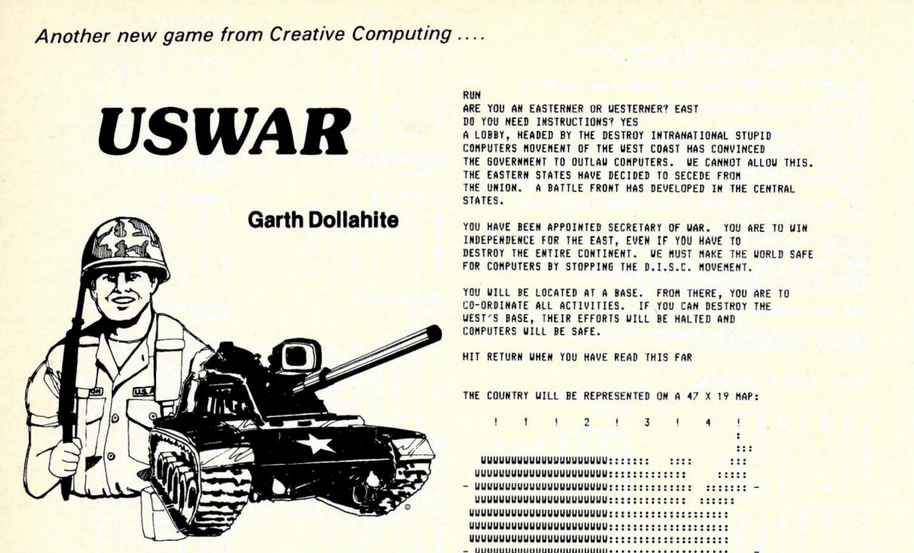
For the average American high-schooler, the second half of the 70s was a happy time: first, the draft had ended. But more importantly, you could make tongue-in-cheek games about a US Civil War and no one would read more into it than if it had been elves and orcs!
United States War Game, East vs West (according to the code), or more simply USWAR (according to the article it was published in) was a type-in game released in the October 1979 issue of Creative Computing. I had it listed as lost/missing, but my computer’s crash gave me an opportunity to double-check my list and I found out that the game had never been missing in the first place, just “not transcribed into actual code”. I tried to remedy this personally, but initially failed – commenter LanHawk had to intervene and fix both my transcription and some issues with the original code itself before I could test the game.
USWEST features the least probable alliance in a hypothetical US Civil War: the West against the East – which means it pits an alliance which includes Maine and South Carolina against an alliance which includes North Dakota and California.
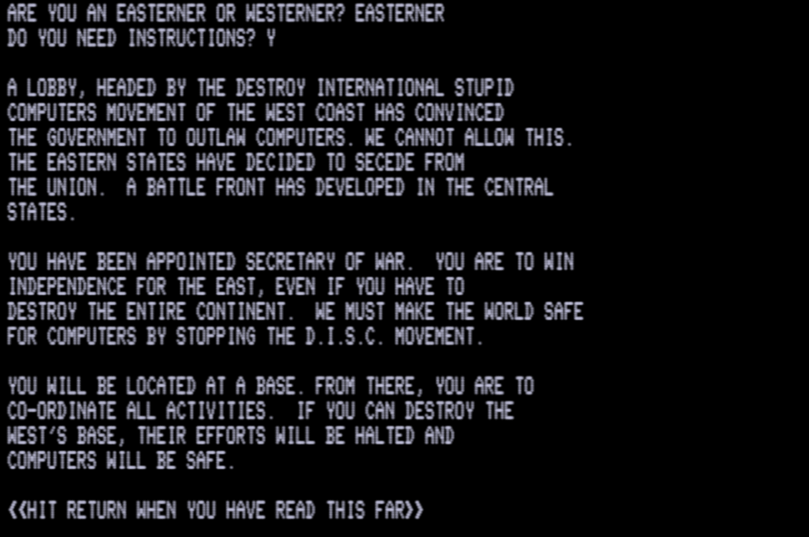
Once the player has chosen their side, they can deploy assets:
- One base, if it is taken, it is game over,
- 40.5 strength points of armies, with each unit deployed having a maximum of 9 strength points,
- 4 mines – if an army walks on these it goes **kaboom**,
- 5 long-range guns.
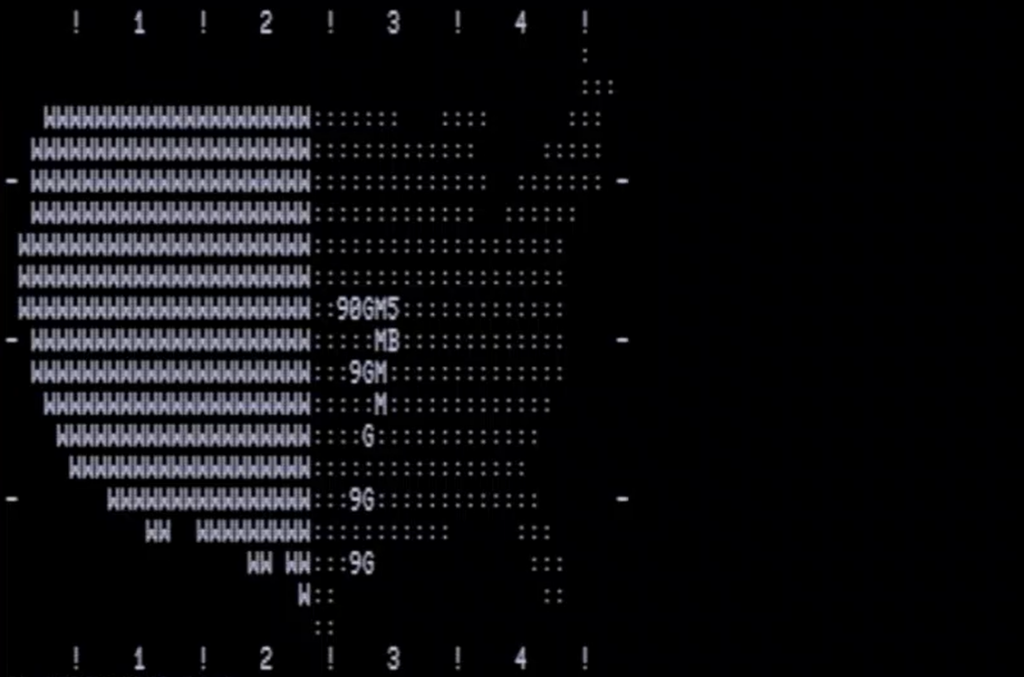
The objective is to destroy the other side’s base. This is however a miserable experience. The crux of the issue is that you don’t see anything in the enemy territory: your view range is literally 0!
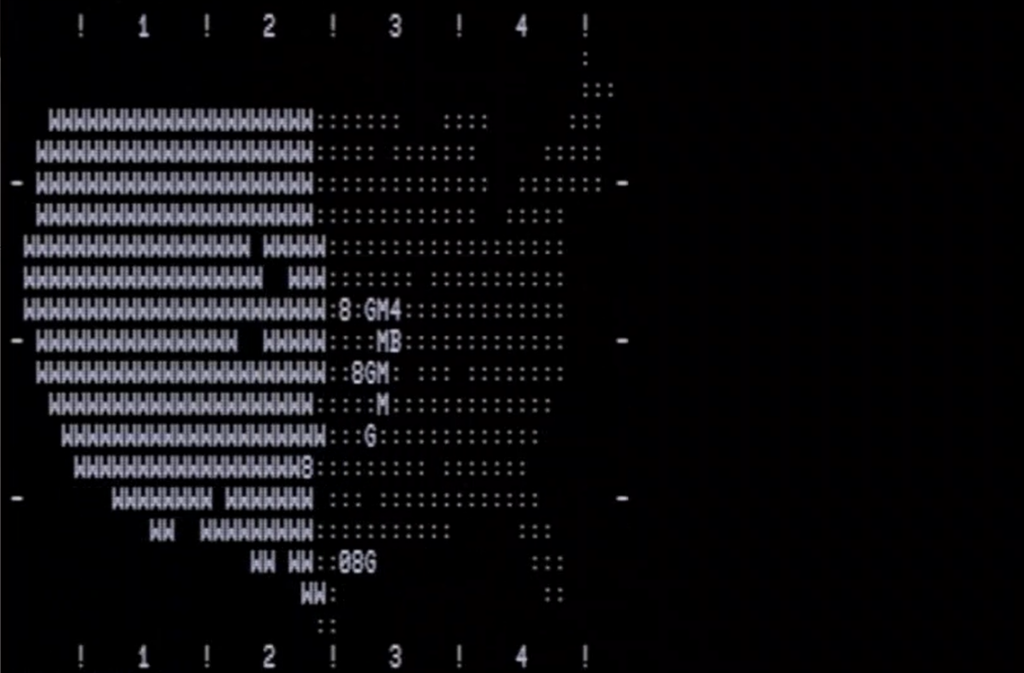
Compounding this visibility issue, you can only move one unit of infantry by one square every turn, after which you can shoot twice with your artillery, either on enemy targets that entered your territory or, if none of them are threatening, blindly in the fog – but keep in mind that your guns have a limited range so for all you know the enemy base is out of range.
The final touch in this monument to bad design is that your units are selected by typing their coordinates, and finding the correct vertical axis can require some serious squinting. Shooting also requires exact coordinates, and then your shells can miss their targets anyway.
Once you have played your turn, the AI does the same, but it can move two units by turn (or the same unit twice), in addition to its artillery attacks.
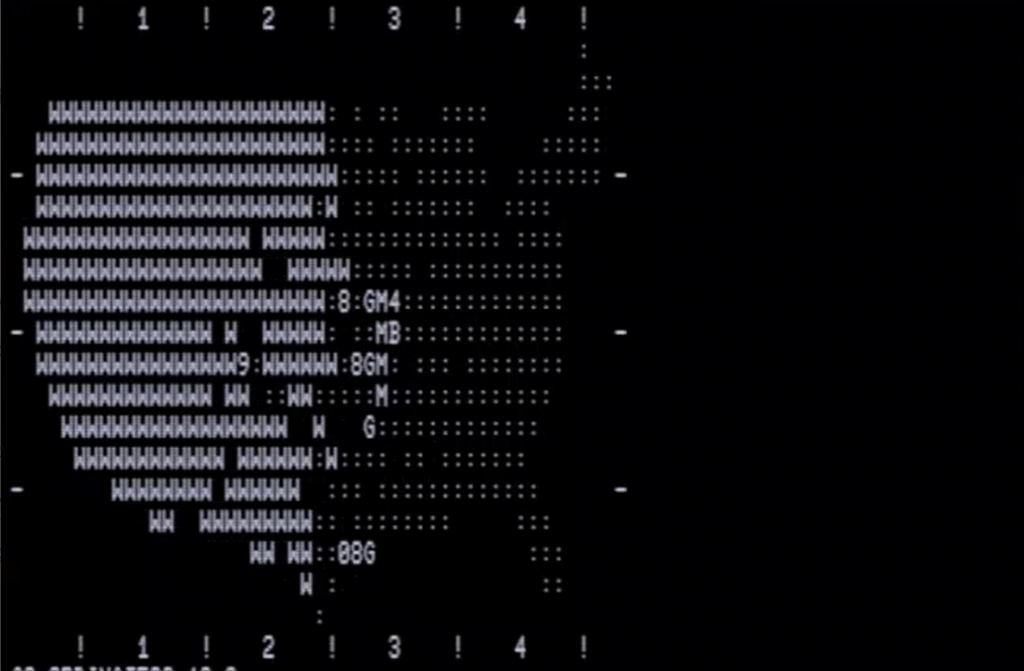
In my session, I pushed my infantry blindly into the fog where I found an enemy gun.

Later, the same infantry blew up on a minefield. I was unwilling to spend the rest of my Saturday combing 1979 ASCII Western USA to find a base, and I stopped the session there.
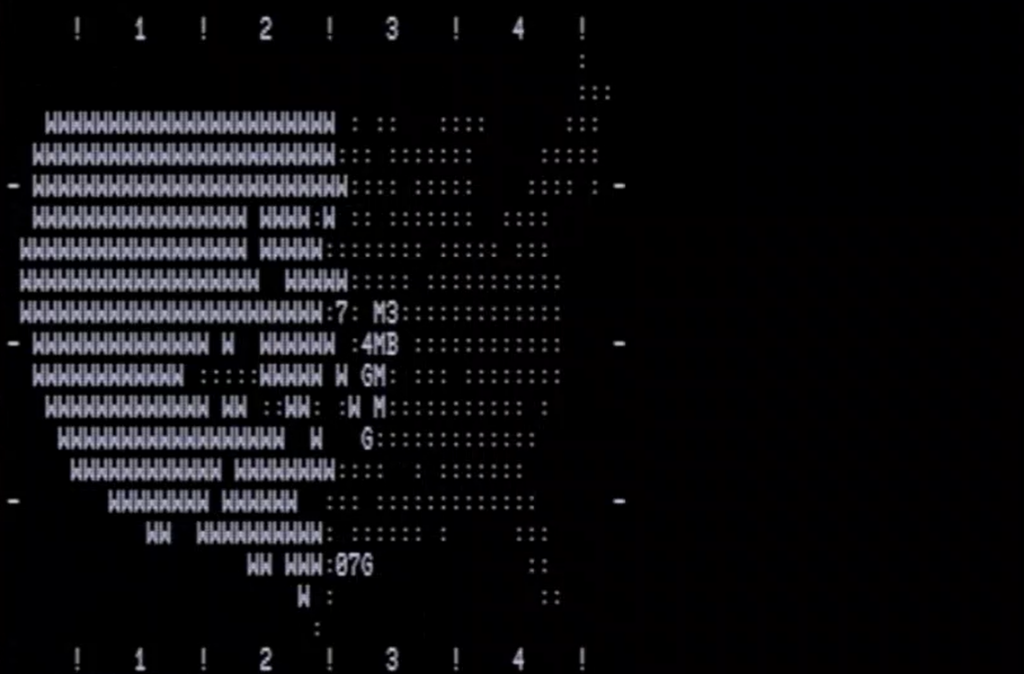
With a longer viewing range, USWAR could have been an interesting game, but as it was published it plays like a slow Battleship. Of course, most type-in games were terrible as games, but great as learning tools, so that’s on par with expectations. Furthermore, I forgive a lot to its author Garth Dollahite, as he was 18 years old at most in 1978. USWAR was written in May 1978 on an HP2000 at the Franklin High School in Stockton, California; he had previously (June 1977) programmed Baseball, which was published in the October 1978 issue of the People’s Computer Company. Dollahite later went professional, but unfortunately his computer of choice was the unsuccessful Ti99/4, for which he coded an unofficial port of Invader (1981) before co-founding a company called Sofmachine (March 1983). The short-lived Sofmachine published 3 official Atari ports (Dollahite is credited on Pole Position) and made a couple of other games (in the case of Dollahite a Missile Command clone called Barrage), but it did not survive the demise of the Ti99/4 in 1984. Dollahite disappeared from the archives after that.
If you want to test this minor piece of gaming history, I uploaded it here. I could run it on a TRS-80 [Model 4P] emulator, itself running BASIC. There may be lingering bugs, in particular in combat resolution.
In other news, I have to skip Fall Gelb. I managed to obtain a copy of this computer-assisted wargame, and found out that its lengthy campaign is not compatible with the combination of small Parisian flat and curious 2- and 4- year olds.

6 Comments
Interesting idea… but that sounds like torture to play!
“California would be the last state to outlaw computers!”
And large swaths of the rural south would be for it! That said, all D.I.S.C. needs to do is switch off Waze and the east coast is doomed.
Waze being switched off explains pretty well why I can’t see anything when exploring Western USA.
I did check the code and I was disappointed to see that (it seems) the intro text is the same whatever the choice of East vs West. I would I have been interested to know what excuses would have given to justify the destruction of computers.
I reckon you could find one in the manifesto of the anti-computer terrorist group CLODO [1980-1983]. It anticipated pretty well some impacts of the computer.
One day I need to check your Cold War terrorist organizations. If there are more like this one it’s going to be a great read.